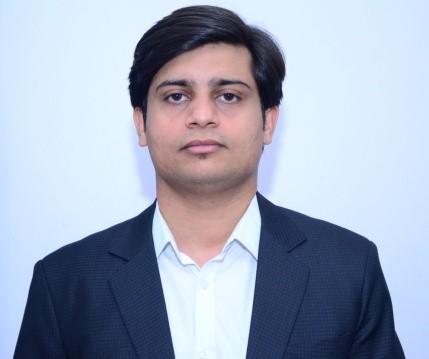 Abhishek Shukla, Vendor Development & Marketing, Saison Components & Solutions
Abhishek Shukla, Vendor Development & Marketing, Saison Components & Solutions
Industry 4.0 is a term that has been around for a while now; it represents a ‘fourth industrial revolution’. It enables advanced manufacturing to connect big data and analytics with automation and robotics, improving cost, productivity, profitability and operations.
Industry 4.0 takes the emphasis on digital technology from recent decades to a whole new level with the help of interconnectivity through the Internet of Things (IoT), access to real-time data, and the introduction of cyber-physical systems. While every company & organization operating today is different, they all face a common challenge-the need for connectedness and access to real-time insights across processes, partners, products, and people.
That’s where Industry 4.0 comes to play.
Industry 4.0: Is India ready for the change?
Like in the rest of the world, Yes India is also very keen on adopting Industry 4.0 and has taken several initiatives to adopt the same. According to IBEF, the Government of India plans to increase the contribution of manufacturing sector to 25% of Gross Domestic Product (GDP) by 2025, from the current level of 16%. India is also prepared to face global competition by undertaking the Make in India programme. It is all set to lead the world with Smart Manufacturing.
The heavy industries and public enterprises ministry are facilitating the establishment of four centres in the country to help SMEs implement Industry 4.0
India’s first Smart factory is being set up at Bengaluru. This smart factory powered by data exchange in manufacturing and the Internet of Things (IoT).
Andhra Pradesh government aims to turn the state into an Internet of Things (IoT) hub by 2020. The state government plans to set up 10 IoT hubs with the participation of the private sector which will create 50,000 direct employment in various IoT verticals
This shows Industry 4.0 has already begun in the country.
 Industrial 4.0 & IoT Market Trend to look out at in upcoming years
Industrial 4.0 & IoT Market Trend to look out at in upcoming years
The IoT is a crucial element of Industry 4.0.Growing Industry 4.0 through the IoT is not just possible,There would be no fourth industrial revolution, no Industry 4.0 and no Smart Factory without the Internet of Things.
Today, most major enterprises have already integrated IoT into their core systems and initiatives to drive digital businesses. From smart city to smart mobility, IoT exist at every inch.The IoT marketplaces are like gateways that offer companies the option to connect and interact with a wide range of vendors, without having to create or change existing platforms. As we rely on connected devices to make our lives better, security would play a major role. IoT security requires a multi-layered approach where all participants in the IoT ecosystem are responsible for the security of the devices, data and solutions.
IoT is a promising technology which tends to revolutionize and connect the global world via heterogeneous smart devices through seamless connectivity. It will also force mobile providers to move faster than ever.
Another sector to look out is automotive. The connected automotive sector is a growing sector in India and expected to grow exponentially in the coming years. Usage of IoT within truck, car rental and other companies would see exponential usage of IOT.
Smart utility-key sector to focussed at, energy today is much more than a mere natural resource, increasing population & pollutions led to uncontrolled energy consumption. Smart grid is solutions for such that allows generators, suppliers and consumers to be integrated by intelligent control, monitoring and communication of energy consumption.
Saison’s Solutions for Communication, Automotive & Smart Utility.
Passive components play a very important role with a few notable advancements in for the IoT. Firstly, charging devices without wires has been a huge benefit. The efficiency of wireless charging depends largely on the quality of the charging coils – these are passive devices which act as the interface between the device and the charger. Secondly, passives have been instrumental with energy storage for energy harvesting. Passive components allow for energy storage in small sensor nodes to comply with the decreasing size of devices. Lastly, passives are able to protect devices from other users. The ESD protection device, which protects electronic products from electrostatic discharge (ESD), is arguably the most important passive component. For IoT devices such as wearables, which are intended to be touched and handled frequently have to be taken care of.
Saw device, our one of the solution for communication. These devices are compact, cost efficient, easy to fabricate, and have a high performance. As our major focused being on how we can reduce pollution & products related to it, here is Saw Device which can work even without batteries and operate under harsh environments.
SAW devices can work as filters, signal processing units, sensors and actuators. They device have been widely used in different fields and will continue to be of great importance in the foreseeable future.
Lithium Ion Batteries, as part of environmental commitment, Fanso Primary batteries use raw material that reduce consumption of fossil energy & pollution.Mainly applied to commercial market, military field, aerospace, GPS and various force stations.
The Internet of Things (IoT) relies on the use of autonomous, wirelessly connected sensors to relay data about changing environmental conditions at often remote, difficult-to-reach locations. As a result, IoT sensor nodes need to be able to provide their own power over many years.
Although IoT sensor nodes may make use of energy harvesting to provide electrical power, the amounts of energy available are small and often unreliable. The sensor node generally needs some way of storing energy temporarily so that it is ready when a reading has to be taken or a message sent wirelessly. One option is to provide a small rechargeable battery or storage capacitor. However, these storage mechanisms have their own drawbacks that can limit their usefulness: rechargeable batteries wear out after a few hundred charge-discharge cycles and need to be replaced, and capacitors will not just change their characteristics over time but will self-discharge rapidly. The self-discharge can be as much as 20 percent per day, causing much of the converted energy to be wasted.
To ensure that power can be supplied over the lifetime of the IoT product, a primary battery may be needed although it could be supplemented by the combination of an energy harvesting and storage subsystem. Through the use of harvesting, it is possible to extend the usable lifetime of the sensor node before its primary battery is exhausted and needs to be replaced or the node itself is disposed.
Supercapacitor could be what ends up powering the Internet of Things (IoT). The devices that make up the IoT will likely depend on some kind of energy-harvesting mechanism that will make the incorporation of small but powerful energy storage devices like supercapacitors a critical element of these devices.Super capacitors have increased the number of applications they are used in as they resolve the limitations in batteries. From being used in the solar tracking application for powering motors to providing power back-up via Diesel generator in Telecom towers. Super capacitors are also in solar inverters to enhance battery life. In smart/energy meters, supercapacitors are used for power back-up in case of outage.
EMI Filter, another solution for utility sector. With excellent noise suppression, Yunpen EMI Filter can be used in almost all electrical & electronic equipment.
Other than this, Saison also offers RF Antenna, GPS Antenna Ferrite Bead, Inductor, Wireless charging coil, NFC product& displays and look forward to support the IOT industry with many components & products.






